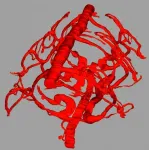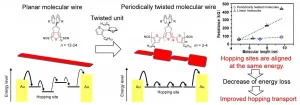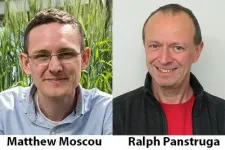INFORMATION:
Contact us for videos of the phenomenon: presse@cnrs.fr
Notes
(1) At the Institut de Biologie Intégrative de la Cellule (CNRS/Université Paris-Saclay), the Laboratoire d'Hydrodynamique (CNRS/Ecole Polytechnique), the Laboratoire de Mécanique des Solides (CNRS/Ecole Polytechnique) and the Laboratoire Physique et Physiologie Intégrative de l'Arbre en Environnement Fluctuant (INRAE/Université Clermont Auvergne).
In plants, channels set the rhythm
2021-01-02
(Press-News.org) Although plants are anchored to the ground, they spend most of their lifetime swinging in the wind. Like animals, plants have 'molecular switches' on the surface of their cells that transduce a mechanical signal into an electrical one in milliseconds. In animals, sound vibrations activate 'molecular switches' located in the ear. Scientists from the CNRS, INRAE, Ecole Polytechnique, Université Paris-Saclay and Université Clermont-Auvergne (1) have found that in plants, rapid oscillations of stems and leaves due to wind may activate these 'switches' very effectively. They could allow plants to 'listen' to the wind. This is a key advantage in preparing them for storms, by modulating their growth. This work was published in PNAS on December 28, 2020.
ELSE PRESS RELEASES FROM THIS DATE:
Sugars influence cell-to-surface adhesion
2021-01-02
How can cells adhere to surfaces and move on them? This is a question which was investigated by an international team of researchers headed by Prof. Michael Hippler from the University of Münster and Prof. Kaiyao Huang from the Institute of Hydrobiology (Chinese Academy of Sciences, Wuhan, China). The researchers used the green alga Chlamydomonas reinhardtii as their model organism. They manipulated the alga by altering the sugar modifications in proteins on the cell surface. As a result, they were able to alter the cellular surface adhesion, also known as adhesion force. The results have now been published in the ...
A single gene 'invented' haemoglobin several times
2021-01-02
Thanks to the marine worm Platynereis dumerilii, an animal whose genes have evolved very slowly, scientists from CNRS, Université de Paris and Sorbonne Université, in association with others at the University of Saint Petersburg and the University of Rio de Janeiro, have shown that while haemoglobin appeared independently in several species, it actually descends from a single gene transmitted to all by their last common ancestor. These findings were published on 29 December 2020 in BMC Evolutionary Biology.
Having red blood is not peculiar to humans or mammals. ...
Electrons hop to it on twisted molecular wires
2021-01-02
Osaka, Japan - Researchers at Osaka University synthesized twisted molecular wires just one molecule thick that can conduct electricity with less resistance compared with previous devices. This work may lead to carbon-based electronic devices that require fewer toxic materials or harsh processing methods.
Organic conductors, which are carbon-based materials that can conduct electricity, are an exciting new technology. Compared with conventional silicon electronics, organic conductors can be synthesized more easily, and can even be made into molecular wires. However, these structures suffer from reduced electrical conductivity, which prevents ...
Significant disparities in telemedicine use, especially among older and POC patients
2021-01-02
After "COVID-19," the term that most people will remember best from 2020 is likely to be "social distancing." While it most commonly applied to social gatherings with family and friends, it has impacted the way many receive medical care. Historically, the United States has been relatively slow to broadly adopt telemedicine, largely emphasizing in-person visits.
However, the COVID-19 pandemic, especially in the spring of 2020, necessitated increased use of virtual or phone call visits, even prompting the Center for Medicare and Medicaid Services (CMS) to relax some of its regulations, primarily for video-based ...
Scientists turned toxic pesticide into treatment against antibiotic-resistant bacteria
2021-01-02
N-Aryl-C-nitroazoles are an important class of heterocyclic compounds. They are used as pesticides and fungicides. However, these substances could be toxic to humans and cause mutations. As they are not frequently used, there is little data about them in the medicinal chemistry literature. However, it has been suggested recently that the groups of compounds that are traditionally avoided can help to fight pathogenic bacteria. Yet, to reduce toxic effects, a great amount of work must be carried out at the molecular level, ...
Flag leaves could help top off photosynthetic performance in rice
2021-01-02
The flag leaf is the last to emerge, indicating the transition from crop growth to grain production. Photosynthesis in this leaf provides the majority of the carbohydrates needed for grain filling--so it is the most important leaf for yield potential. A team from the University of Illinois and the International Rice Research Institute (IRRI) found that some flag leaves of different varieties of rice transform light and carbon dioxide into carbohydrates better than others. This finding could potentially open new opportunities for breeding higher yielding rice varieties.
Published ...
Story tip from Johns Hopkins expert on Covid-19
2021-01-02
In a study that looked at suicide deaths during 2020's first wave of the COVID-19 pandemic in Maryland, Johns Hopkins Medicine researchers found that, contrary to general predictions of suicides skyrocketing, suicides in the overall population actually dropped, relative to previous years. However, the researchers also discovered that suicide deaths increased dramatically among Black Marylanders during the same period.
The researchers say that their findings, published Dec. 16, 2020, in JAMA Psychiatry, highlight the importance of timely identification of high-risk groups and vulnerable populations to reduce suicide numbers.
Black Americans have been ...
UCLA scientists develop high-throughput mitochondria transfer device
2021-01-02
LOS ANGELES -- Scientists from the UCLA Jonsson Comprehensive Cancer Center have developed a simple, high-throughput method for transferring isolated mitochondria and their associated mitochondrial DNA into mammalian cells. This approach enables researchers to tailor a key genetic component of cells, to study and potentially treat debilitating diseases such as cancer, diabetes and metabolic disorders.
A study, published today in the journal Cell Reports, describes how the new UCLA-developed device, called MitoPunch, transfers mitochondria into 100,000 or more recipient cells simultaneously, which is a significant improvement from existing mitochondrial transfer technologies. The device is ...
College football players underestimate risk of injury and concussion
2021-01-02
AURORA, Colo. (Dec. 29, 2020) - College football players may underestimate their risk of injury and concussion, according to a new study published today in JAMA Network Open.
Christine Baugh, PhD, MPH, assistant professor of medicine at the University of Colorado School of Medicine and member of the CU Center for Bioethics and Humanities, is the corresponding author of the article, "Accuracy of US College Football Players' Estimates of Their Risk of Concussion or Injury."
Baugh and co-authors report on survey results of 296 college football players from four teams in the Power 5 Conferences of ...
The puzzle of nonhost resistance: why do pathogens harm some plants but not others?
2021-01-02
People have puzzled for years why pathogen Phytophthora infestens causes the devastating late blight disease, source of the Irish Potato famine, on potatoes, but has no effect at all on plants like apple or cucumber. How are apple trees and cucumber plants able to completely shake off this devastating pathogen? Agricultural scientists have wondered for years: if this resistance is so complete and persists over so many generations, is there some way we could transfer it to susceptible plants like wheat and thereby stop disease?
Why is it so important to determine the molecular basis of nonhost resistance? ...



